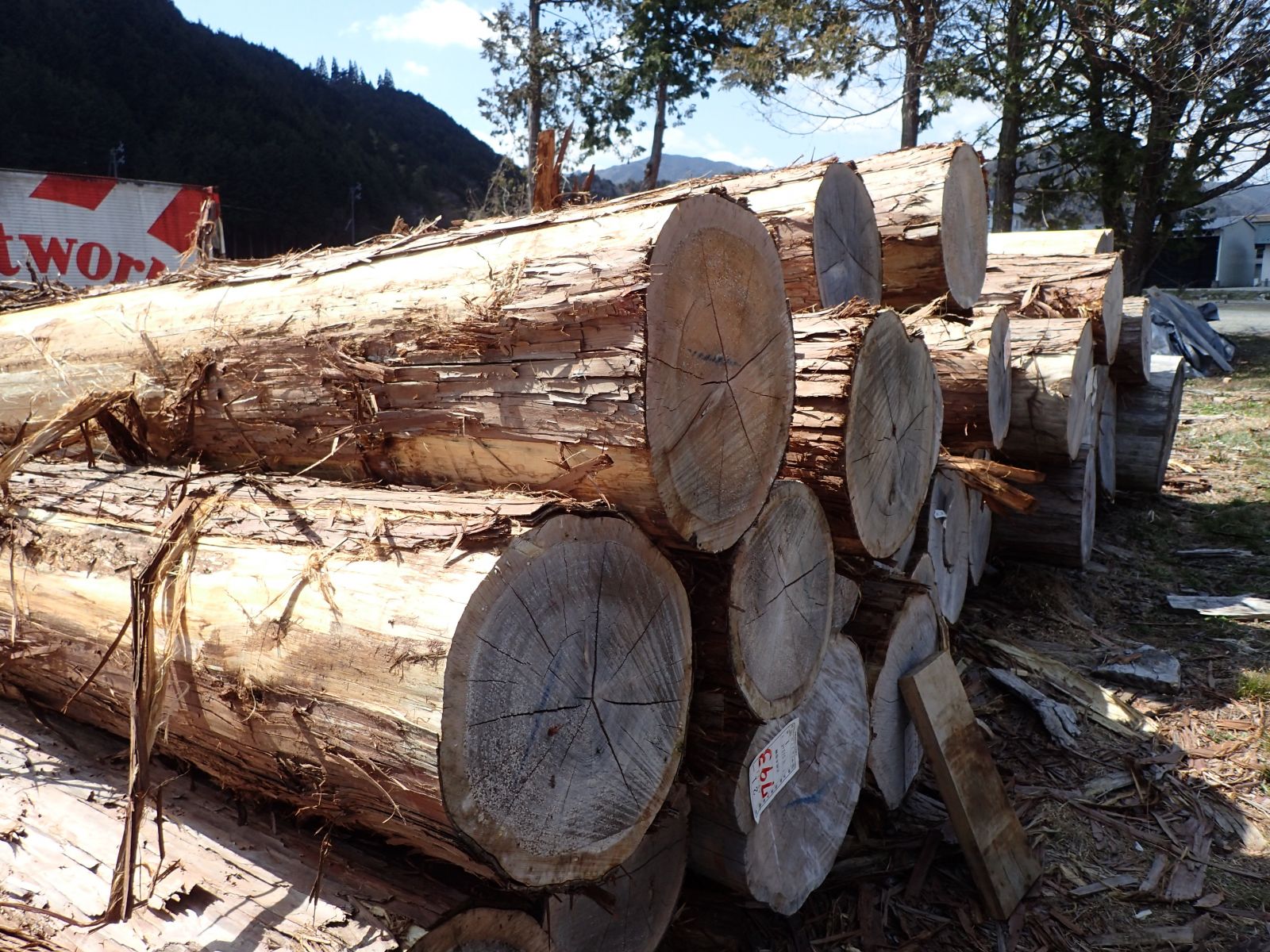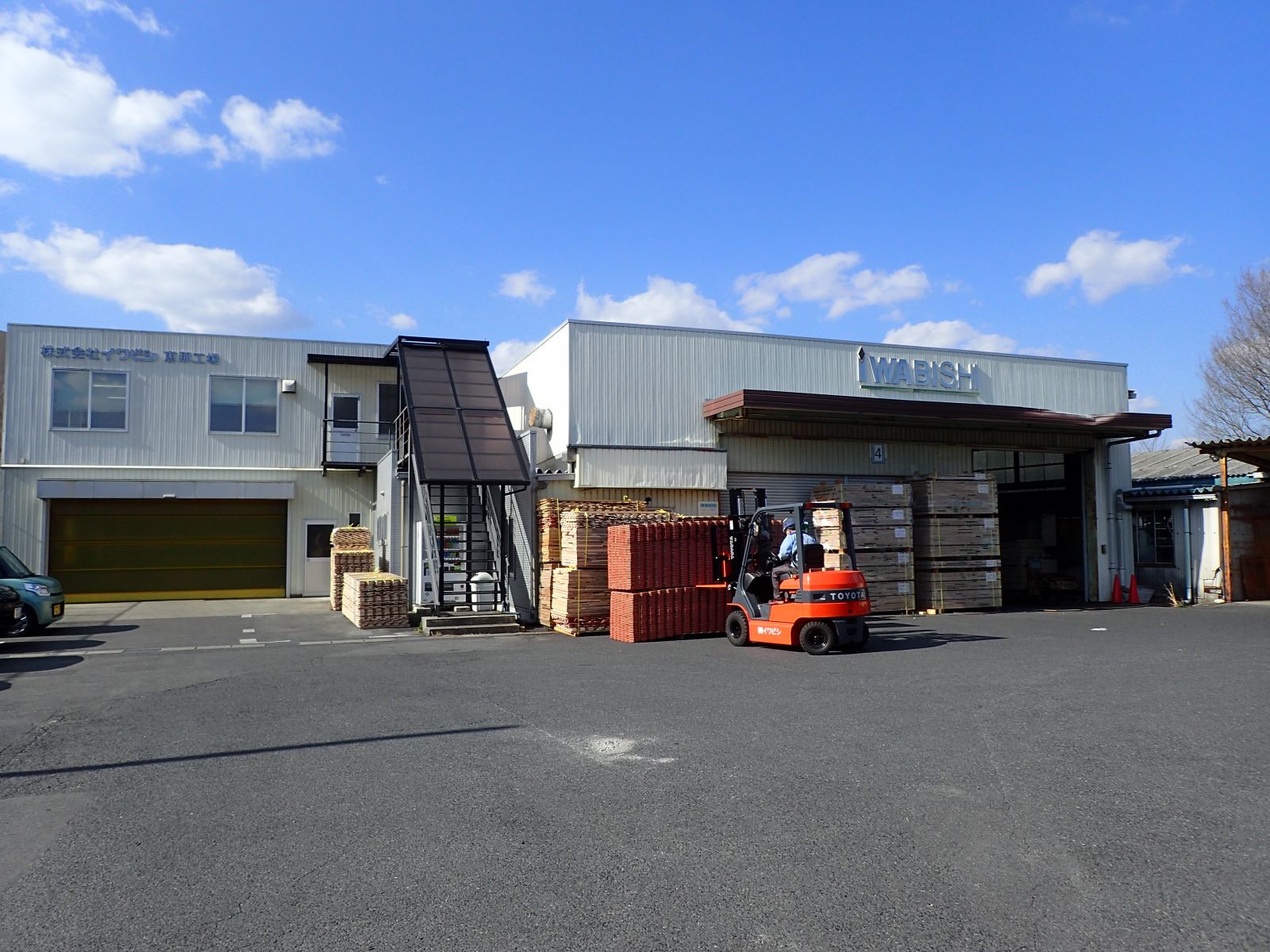A Study Trip Report: Unique Culture and Wood industry Development in Nakatsugawa, Gifu Prefecture on 4 April 2019
Written by Simone Vongkhamho, PhD student, Graduate School of Bioagricultural Sciences, Nagoya University

This was a one-day study trip in Gifu prefecture, which was organized by Ogaki Kyoritsu Bank (OKB) for ASCI student on April 4th 2019, aiming to allow the student to learn and have understanding in depth of wood-related unique culture and wood industry development in Japan. The trip was designed to visit the Kashimo Meijiza Theater, Ryugean-Hayakawa Industry Limited Co. and Iwabishi Corporation in Nakatsugawa municipality. There has been a long history of utilization of Japanese cypress (Hinoki) and Japanese cedar (Sugi). These are the main trees species which have been used for housing construction and building material, and also other purposes for many centuries. While the times have changed, the wood has been at the center of Japanese culture. The wood processing companies were mainly utilizing the timber from domestic market. For keeping the productivity and profitability, the companies not only mechanized and improved skills, but also kept developing the design of their products to meet customer needs. Although I am interested in if wood colors of the products is related to its market value in Japanese market, it is unlikely to be a matter for the cypress and the cedar.
1. Kashimo Meijiza Theater
It’s my first time to visit the local Kabuki theater located at the beautiful scenery. I have witnessed a fascinating and unique characteristic of Japanese culture. I was amazed that the wood is a main building material for this theater. The theater’s manager/keeper added that wood can be adapted to the environmental condition. Moreover, he also told us that Kashimo is a producing center of the high quality cypress wood (Tono Hinoki) and its market price depends on its age.

2. Ryugean, Hayakawa Industry Limited Co.
The representative director, Mr.Masato Hayakawa, showd us a flow of wood processing. He took us to visit Marusa Kumazawa sawmill company, the Buddhist and Shinto altars and fittings factory and store.
The Japanese cypress (Chamaecyparis obtusa) which includes two varieties as Kiso Hinoki and Tono Hinoki, and the Japanese cedar (Cryptomeria japonica) were using as the main materials for the products. The sawmill company sawed these woods and sold to Hayakawa industry. According to Mr. Akihiro Kumazawa who is the representative director of the sawmill, the middle part of the woods has higher market price because of its straight shape. Since the lumbers are curved by high temperature, they are carefully dried in the kiln with normal temperature for 7 to 10 days.
Several types of the Buddhist and Shinto altars in terms of its shape, size, price and materials were made and sold in the shop. Keeping up with locality and market trend in a domestic market, the Hayakawa industry kept developing the design of these products, and producing high-quality products buttressed up with mechanized manufacturing process and skillful craftmen. Sadly, the wood color, which I assume it has an important factor on its price, does not have any effects on its price in Japanese market.
3. Iwabishi Ena factory
I was honored that Mr. Chiaki Kondo and Mr.Hidenori Ando in the Iwabishi introduced me the overview of their activities. The Iwabishi, established in 1916, has produced not only wooden products but also electronic components. They produced wooden products such as Hinoki chairs and tables in addition to panel processing, plywood, particle board, and Medium Density Fiberboard. They used a wide range of tree species, i.e. Pine tree, Japanese cedar, Tono Hinoki, Kiso Hinoki, Japanese beech, Oak and walnut, for their products depending on a kind of products and the needs in the market.

Sadly to say again, the wood color also does not change its market price. The expensive products were made from Kashi, Buna and Keyaki tree species, larger size of lumber, by skillful craftmen, custom-made products, and/or good design.
My overall experience was very satisfying since I had the opportunity to have a closer look and understand the wood culture in Gifu prefecture. This was very beneficial for me in terms of understanding in depth wood production in Lao PDR. We would like to thank Mr. Hiroya Yamashita and Mr.Yoshihisa Kasai from OKB for the arrangement and the attendance of the study trip.
Key messages

This was a one-day study trip in Gifu prefecture, which was organized by Ogaki Kyoritsu Bank (OKB) for ASCI student on April 4th 2019, aiming to allow the student to learn and have understanding in depth of wood-related unique culture and wood industry development in Japan. The trip was designed to visit the Kashimo Meijiza Theater, Ryugean-Hayakawa Industry Limited Co. and Iwabishi Corporation in Nakatsugawa municipality. There has been a long history of utilization of Japanese cypress (Hinoki) and Japanese cedar (Sugi). These are the main trees species which have been used for housing construction and building material, and also other purposes for many centuries. While the times have changed, the wood has been at the center of Japanese culture. The wood processing companies were mainly utilizing the timber from domestic market. For keeping the productivity and profitability, the companies not only mechanized and improved skills, but also kept developing the design of their products to meet customer needs. Although I am interested in if wood colors of the products is related to its market value in Japanese market, it is unlikely to be a matter for the cypress and the cedar.
1. Kashimo Meijiza Theater
It’s my first time to visit the local Kabuki theater located at the beautiful scenery. I have witnessed a fascinating and unique characteristic of Japanese culture. I was amazed that the wood is a main building material for this theater. The theater’s manager/keeper added that wood can be adapted to the environmental condition. Moreover, he also told us that Kashimo is a producing center of the high quality cypress wood (Tono Hinoki) and its market price depends on its age.

2. Ryugean, Hayakawa Industry Limited Co.
The representative director, Mr.Masato Hayakawa, showd us a flow of wood processing. He took us to visit Marusa Kumazawa sawmill company, the Buddhist and Shinto altars and fittings factory and store.
The Japanese cypress (Chamaecyparis obtusa) which includes two varieties as Kiso Hinoki and Tono Hinoki, and the Japanese cedar (Cryptomeria japonica) were using as the main materials for the products. The sawmill company sawed these woods and sold to Hayakawa industry. According to Mr. Akihiro Kumazawa who is the representative director of the sawmill, the middle part of the woods has higher market price because of its straight shape. Since the lumbers are curved by high temperature, they are carefully dried in the kiln with normal temperature for 7 to 10 days.
Several types of the Buddhist and Shinto altars in terms of its shape, size, price and materials were made and sold in the shop. Keeping up with locality and market trend in a domestic market, the Hayakawa industry kept developing the design of these products, and producing high-quality products buttressed up with mechanized manufacturing process and skillful craftmen. Sadly, the wood color, which I assume it has an important factor on its price, does not have any effects on its price in Japanese market.
3. Iwabishi Ena factory
I was honored that Mr. Chiaki Kondo and Mr.Hidenori Ando in the Iwabishi introduced me the overview of their activities. The Iwabishi, established in 1916, has produced not only wooden products but also electronic components. They produced wooden products such as Hinoki chairs and tables in addition to panel processing, plywood, particle board, and Medium Density Fiberboard. They used a wide range of tree species, i.e. Pine tree, Japanese cedar, Tono Hinoki, Kiso Hinoki, Japanese beech, Oak and walnut, for their products depending on a kind of products and the needs in the market.

Sadly to say again, the wood color also does not change its market price. The expensive products were made from Kashi, Buna and Keyaki tree species, larger size of lumber, by skillful craftmen, custom-made products, and/or good design.
My overall experience was very satisfying since I had the opportunity to have a closer look and understand the wood culture in Gifu prefecture. This was very beneficial for me in terms of understanding in depth wood production in Lao PDR. We would like to thank Mr. Hiroya Yamashita and Mr.Yoshihisa Kasai from OKB for the arrangement and the attendance of the study trip.
Key messages
- Japanese Cypress and Cedar are the main tree species, utilizing as main material for making the wooden products and furniture in many decades.
- Gifu prefecture is the homeland of the high quality of Cypress wood, the price is depending on its age.
- Wood lumbers have been dried in the kiln by air with normal temperature in 7 to 10 days if drying by the high-temperature method, wood would be changed to twist character
- The wood color does not matter for the wooden product price
- The key factors affecting prices are the skillfulness, productive design and high wood quality (free of the knot).